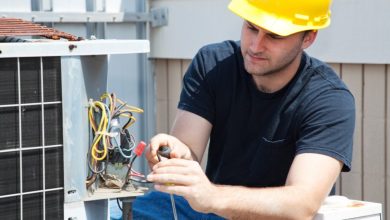Table of Contents
ToggleIntroduction to Urban Redevelopment Projects
Understanding Urban Redevelopment:
Urban redevelopment project are transformative initiatives aimed at revitalizing and enhancing existing urban areas. These projects focus on rejuvenating neighborhoods that have experienced decline, blight, or underutilization, with the goal of creating vibrant, sustainable, and inclusive communities.
Importance of Urban Redevelopment
Addressing Urban Decay:
Urban redevelopment projects play a crucial role in addressing urban decay and blight. By repurposing underutilized or vacant properties, these projects help to reverse the decline of neighborhoods, improve property values, and create safer and more attractive environments for residents and businesses.
Promoting Economic Growth:
Another significant aspect of urban redevelopment projects is their contribution to economic growth. By attracting investment, creating jobs, and stimulating business activity, these projects have the potential to revitalize local economies and generate long-term prosperity for communities.
The Process of Urban Redevelopment
Planning and Visioning:
The first step in any urban redevelopment project is comprehensive planning and visioning. This involves conducting thorough analyses of the existing conditions, engaging stakeholders, and establishing a clear vision for the future of the area. Planning efforts aim to identify goals, objectives, and strategies that will guide the redevelopment process.
Site Assessment and Acquisition:
Once the vision is established, site assessment and acquisition begin. This phase involves evaluating potential redevelopment sites, acquiring necessary properties through negotiation or eminent domain, and clearing any legal or regulatory hurdles. Site acquisition is often a complex process that requires collaboration between developers, property owners, and local government agencies.
Design and Development:
With the site secured, the design and development phase commences. Urban planners, architects, and designers collaborate to create a master plan for the redevelopment area. This plan typically includes a mix of residential, commercial, and public spaces, as well as infrastructure improvements and amenities that support the needs of the community.
Key Components of Urban Redevelopment Projects
Mixed-Use Development:
Many urban redevelopment projects embrace the concept of mixed-use development, which integrates various land uses within a single development or neighborhood. Mixed-use developments often include a combination of residential, commercial, retail, and recreational spaces, creating vibrant and walkable communities where residents can live, work, and play.
Acquisition:
Once the vision is established, the next step is site assessment and acquisition. This phase involves evaluating potential redevelopment sites, conducting environmental assessments, and negotiating with property owners to acquire the necessary land. In some cases, eminent domain may be used to acquire properties for redevelopment purposes, although this is often a last resort.
Developments:
With the site secured, the design and development phase can begin. This phase involves working with architects, engineers, and urban designers to create a master plan for the redevelopment area. The master plan may include a mix of residential, commercial, and public spaces, as well as infrastructure improvements and amenities that enhance the quality of life for residents.
Sustainable Design and Green Spaces:
Sustainability is a central consideration in modern urban redevelopment projects. Developers strive to incorporate sustainable design principles, such as energy efficiency, water conservation, and green building materials, into their projects. Additionally, creating green spaces and recreational areas within redevelopment projects helps to enhance the quality of life for residents and promote environmental stewardship.
Affordable Housing:
Affordable housing is a critical component of urban redevelopment efforts, particularly in areas experiencing housing shortages or affordability challenges. Developers often include affordable housing units within their projects to ensure that a diverse range of residents can access housing options that meet their needs and income levels.
Conclusion
In conclusion, urban redevelopment projects play a vital role in revitalizing and transforming communities for the future. By addressing urban decay, promoting economic growth, and creating sustainable and inclusive environments, these projects have the power to improve the quality of life for residents, attract investment, and foster long-term prosperity. With careful planning, collaboration, and innovation, urban redevelopment projects can unlock the full potential of underutilized urban spaces and create vibrant and thriving communities for generations to come.





